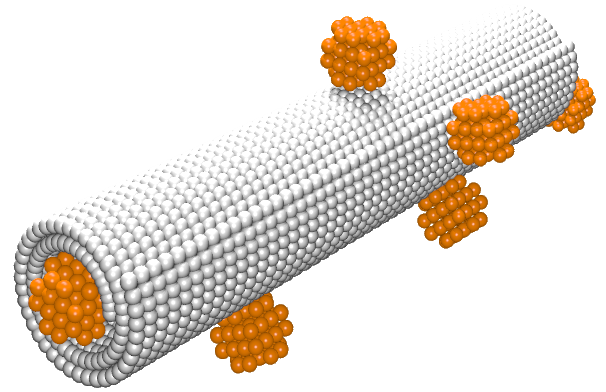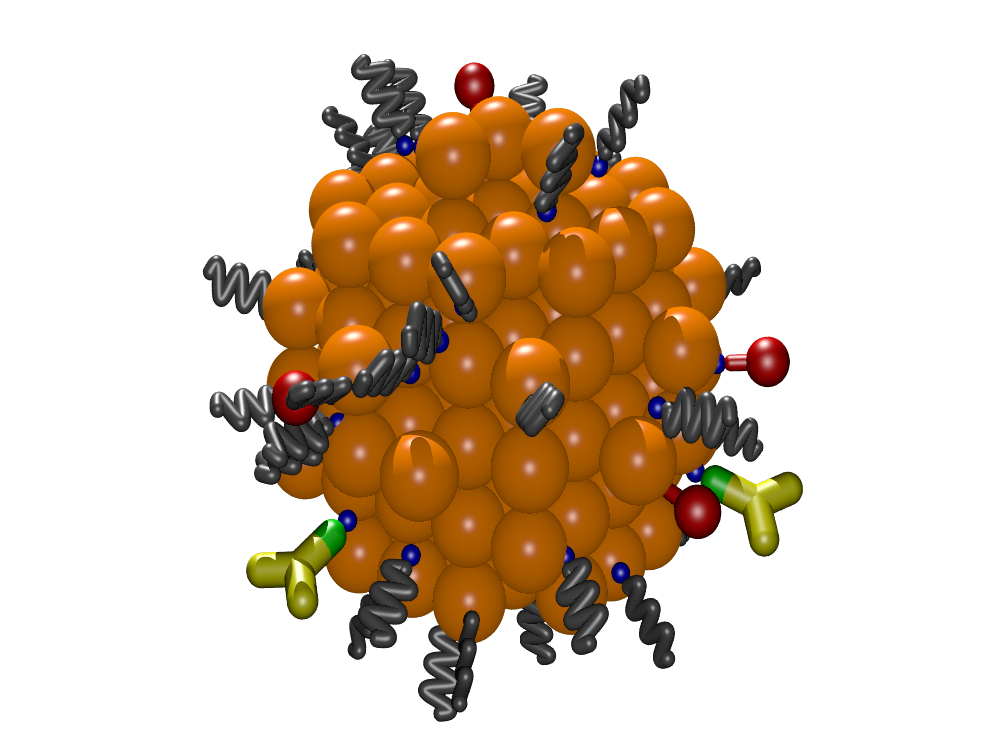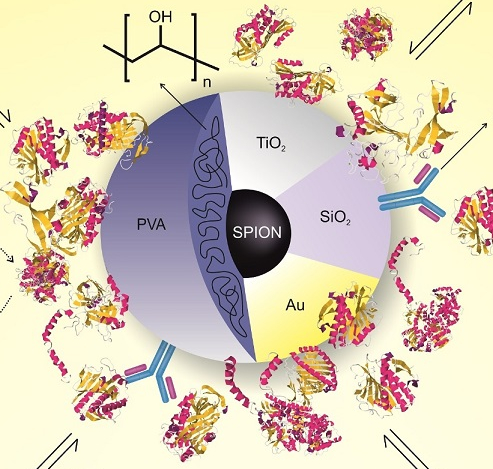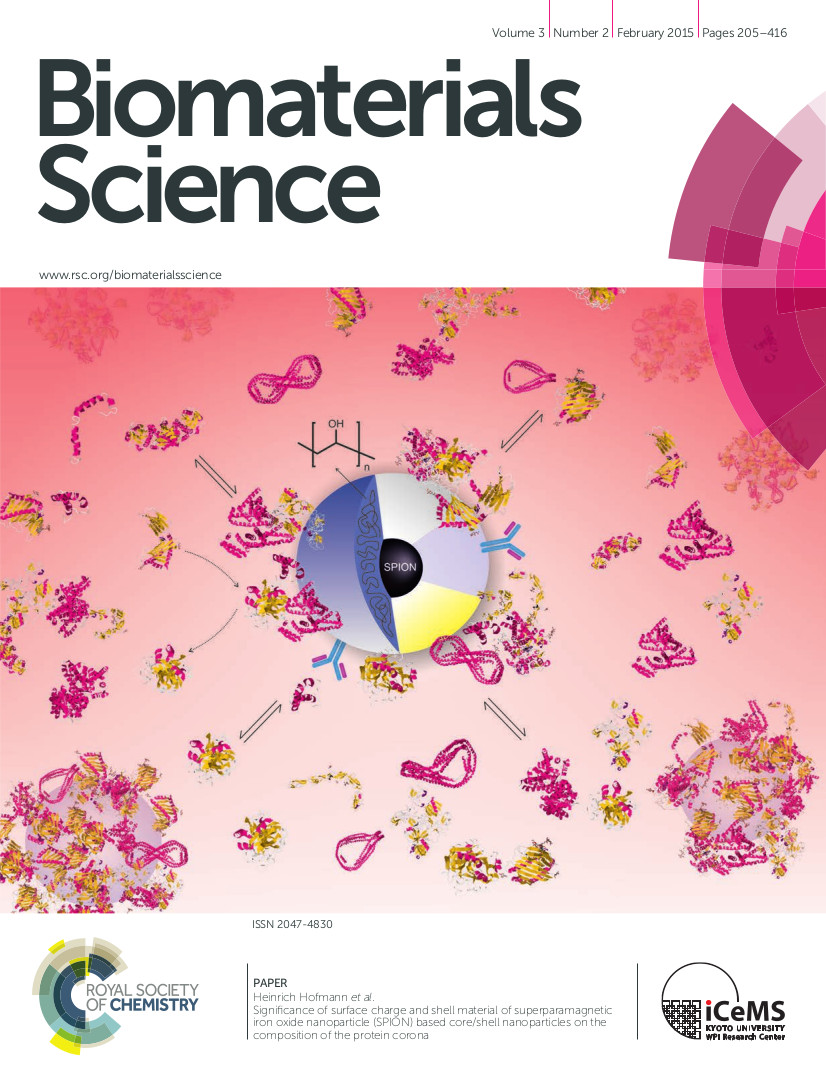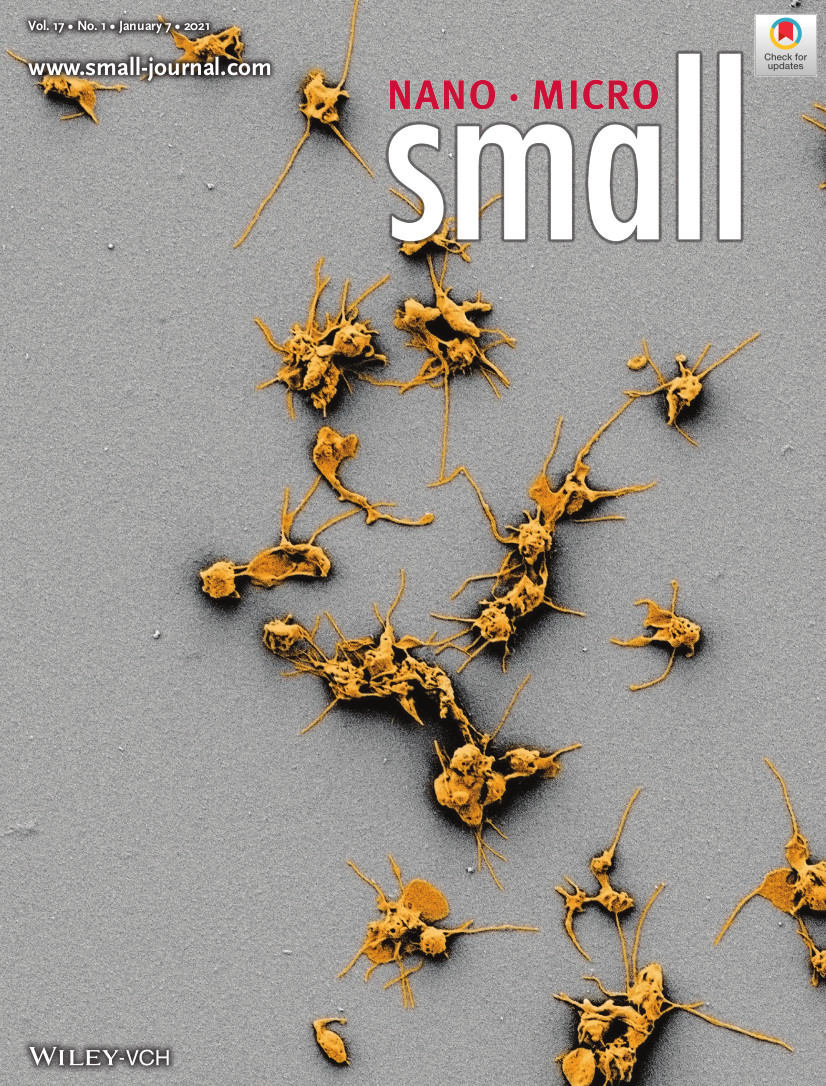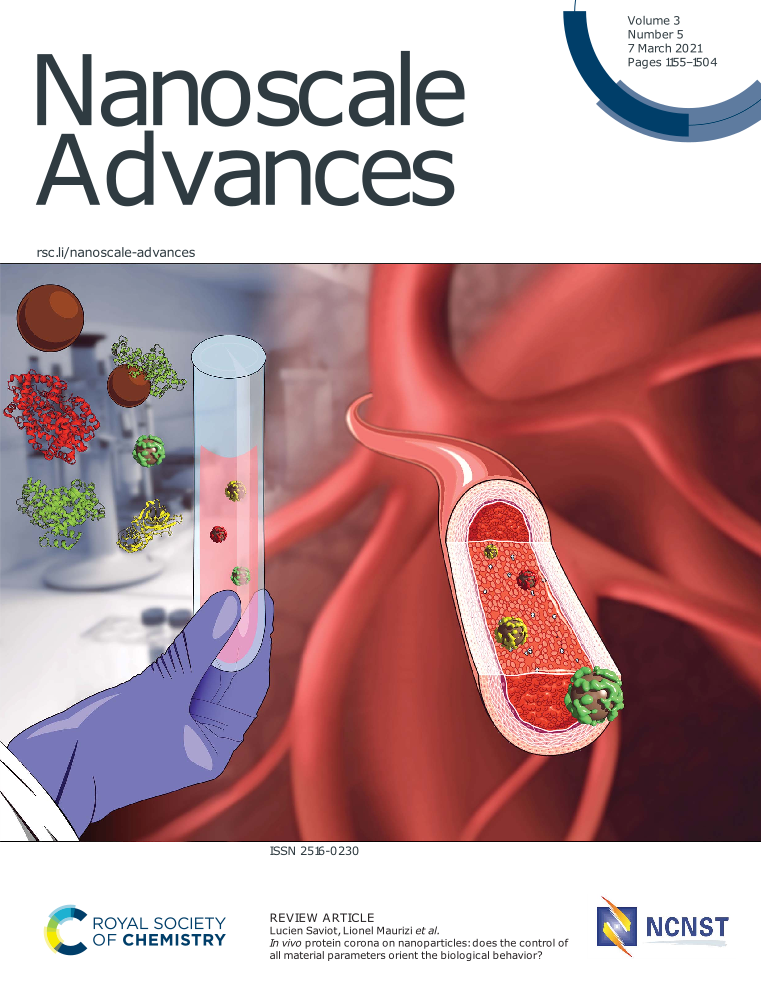Educations and experiences
With a chemical engineering background I started in 2010 a PhD in physical-chemistry on the syntheses and characterizations of nanoparticles for biomedical applications. While going deeper into my nanoparticles skills I learned new knowledge on toxicities and biological behaviors of nanohybrids made for medical purposes.
During my postdoctoral experiences from 2011 to 2016, in particular at EPFL, I continued working on synthesis and characterizations methods « GMP-like » for nanomaterials in order to answer pharmaceutical and medical requirements. I also focused my research on the study and the understanding of the role of nanoobjects physico-chemistry on the living world especially their interactions with protein from biological media: the « Protein Corona«
This thematic is driving my actual research at ICB Laboratory (Nanosciences Department).
More details
2007-2010: After a chemical engineering diploma from the University of Technology of Compiegne (UTC), I started a PhD in physical chemistry at the ICB Laboratory on the Elaboration of functionalized nanoparticles: applications as MRI contrast agent. My research was focused on the syntheses of magnetic nanparticles via soft chemistry or hydrothermal and continuous methods with an accurate control of the physicochemical properties and in depth characterizations. Nanoparticles’ surfaces were also modified and functionalized for a better biocompatibility, less toxicity and targeting behviors in order to be used as a Magnetic Resonance Imaging (MRI) contrast agent.
2011-2015: I worked for 4 years in Pr. H. Hofmann’s team at the Ecole Polytechnique Fédérale de Lausanne (EPFL) on a FP7 European project (Nanodiara) on the development of novel nanotechnology based diagnostic and therapeutic systems for arthritic diseases. My research was centered on one part on the reproducibility and scale-up of the syntheses and methods to face biomedical challenges. On another part, I studied the interactions between nanoparticles and proteins in order to better understand their biological behaviors. This scientific area is commonly called: the « Protein Corona« .
2015-2016: After these projects, I continued my research at Dublin City University (Pr. Dermot Brougham) on a FP7 European project (UNION). Then at Basel University (Pr. Cornelia Palivan) I worked on a Swiss project NCCR (National Centres of Competence in Research). These two projects were focused on the development of physicochemical solutions for biomedical applications such as « nano-flowers » or « nano-vesicles ».
Since the end of 2016: I got a CNRS Researcher (CR) permanent position at the Nanosciences Department of the ICB laboratory to continue working on my thematic focused on the development of nanomedical solutions and on the understanding of their biological behaviors.
Main fields of expertise
- Control of physico-chemistry of nanomaterials
More details
- « GMP-like » surface modification of nanomaterials for biomedical purposes
More details
- Biological interactions of nanomaterials
More details
Main projects in progress
![]() 2022-2026: ANR JC/JC Nanoblorona
2022-2026: ANR JC/JC Nanoblorona
Nanoparticles in blood: understanding and controlling protein corona for optimized nanomedicine
Role during the project: Project leader.
The main goal of this project is to understand, control and optimize protein corona on NPs to avoid suffering random protein adsorption affecting the biomedical efficiencies of engineered NPs circulating in blood.
This project proposes a comprehensive study focused on NPs/proteins interactions in blood circulation in order to control their biological response.
![]() 2021-2024: ANR UFO
2021-2024: ANR UFO
Up-conversion ferroelectric nanocrystal for optical sensing for electric potential in biological systems
Developing an optical nanosensor of extracellular potential in biological environment that transduces cell-related electrical changes (e.g. EAP in the case of neurons) into photoluminescence (PL) modifications relying on a mechanism never explored.
![]() 2020-2022: Collaborative Research Project France-Stanford
2020-2022: Collaborative Research Project France-Stanford
Monitoring therapeutic cell treatments using novel nanoprobes.
Role during the project: Project leader.
Main projects completed
 2019-2022: Regional project on the studies and understanding of proteins interactions with NPs’ surfaces (Inititation of a new research team ANER: Nanoprot” n° 2019-Y-10648)
2019-2022: Regional project on the studies and understanding of proteins interactions with NPs’ surfaces (Inititation of a new research team ANER: Nanoprot” n° 2019-Y-10648)
Role during the project: Project leader.
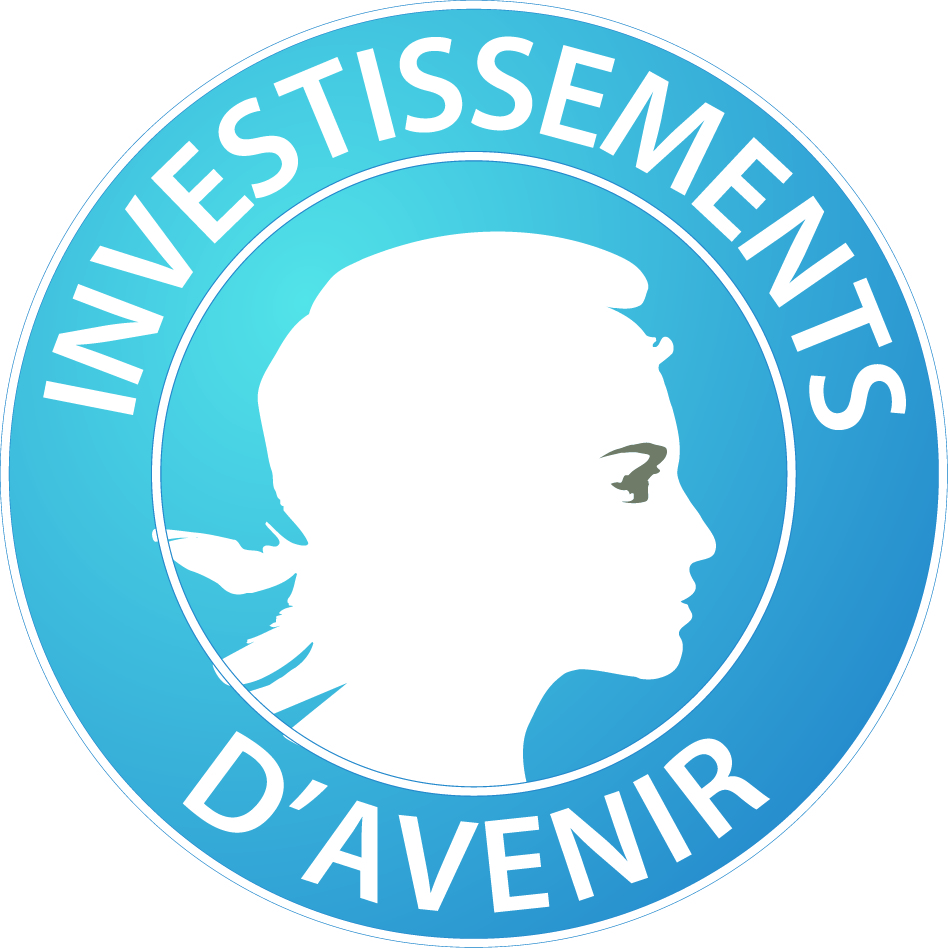 2019-2020: Equipex Imappi
2019-2020: Equipex Imappi
In vivo studies linking the interactions between proteins and nanoparticles and their biodistribution for an optimized development of nanomedicine (ANR-10-EQPX-05 IMAPPI 2020-IMAPPI-1)
Role during the project: Project leader.
![]() 2016: Swiss project NCCR (National Centers of Competence in Research)
2016: Swiss project NCCR (National Centers of Competence in Research)
Molecular Systems Engineering on the development of innovative molecular systems approaching the complexity of a cell.
Role during the project: Member of the project
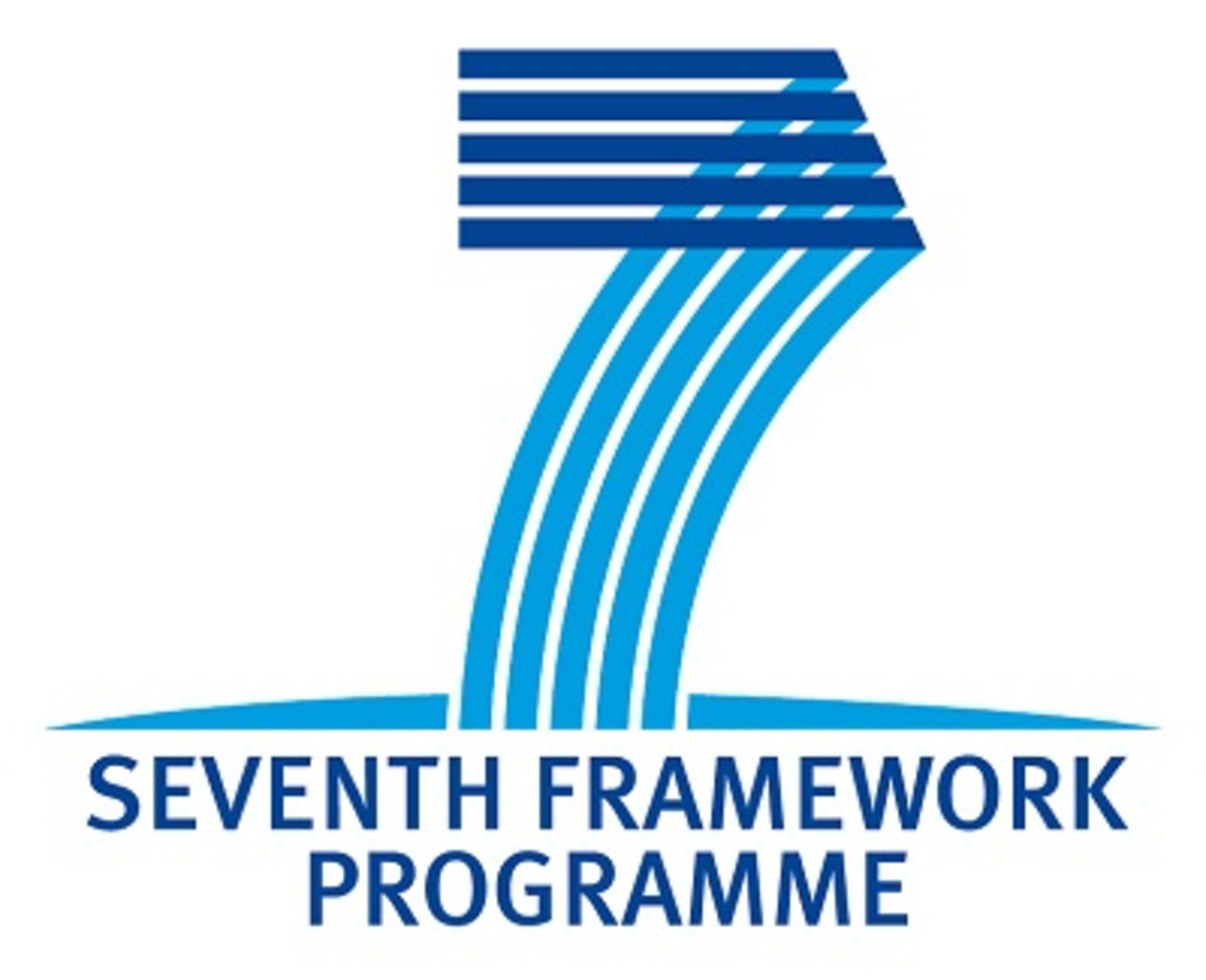 2011-2014: FP7 European project (Nanodiara)
2011-2014: FP7 European project (Nanodiara)
Development of nanotechnological tools for the detection and the therapy of arthrtic diseases.
Role during the project: Co-project leader of WP1
Summary of publications
42 articles in peer-reviewed journals
4 international conferences proceedings
4 Book chapters
Publications list and Book Chapters details
4 Books chapters
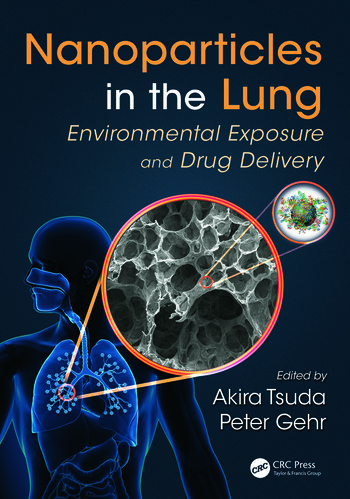
Nanoparticles in the Lung:
Environmental Exposure and Drug Delivery
Edited by Akira Tsuda and Peter Gehr
Section VI:Special Issues
Chapter 16: Physicochemical, Colloidal, and Transport Properties
(pages 251-266)
Heinrich Hofmann, Lionel Maurizi, Marie-Gabrielle Beuzelin, Usawadee Sakulkhu and Vianney Bernau
December 19, 2014 by CRC Press – 403 Pages
ISBN 9781439892794 – CAT# K14165
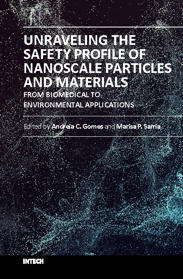 Unraveling the Safety Profile of Nanoscale Particles and Materials
Unraveling the Safety Profile of Nanoscale Particles and Materials
From Biomedical to Environmental Applications
Edited by Andreia C. Gomes and Marisa P. Sarria
Chapter 2
Toxicological Risk Assessment of Emerging Nanomaterials: Cytotoxicity, Cellular Uptake, Effects on Biogenesis and Cell Organelle Activity, Acute Toxicity and Biodistribution of Oxide Nanoparticles
(pages 17-36)
Lionel Maurizi, Anne-Laure Papa, Julien Boudon, Sruthi Sudhakaran, Benoit Pruvost, David Vandroux, Johanna Chluba, Gerard Lizard and Nadine Millot
March, 2018 by InTech – 172 Pages
ISBN 9789535139409
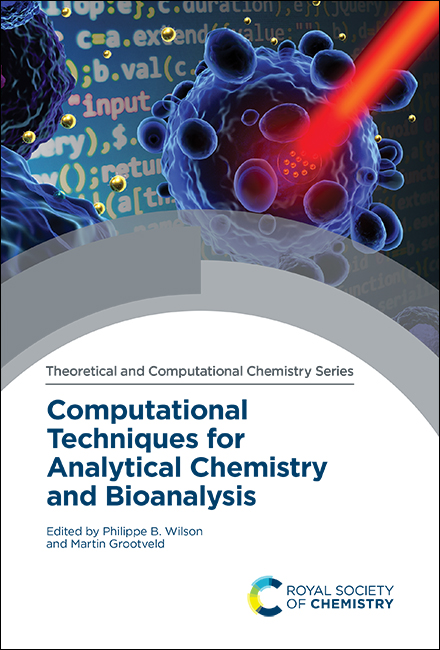 Computational Techniques for Analytical Chemistry and Bioanalysis
Computational Techniques for Analytical Chemistry and Bioanalysis
Edited by Philippe B. Wilson and Martin Grootveld
Chapter 8
Solid State Chemistry: Computational Chemical Analysis for Materials Science
(pages 287-334)
Estelina Lora da Silva, Sandra Galmarini, Lionel Maurizi, Mario Jorge Cesar dos Santos, Tao Yang, David J. Cooke and Marco Molinari
2021 by RSC – 365 Pages
ISBN 978-1-78801-461-8
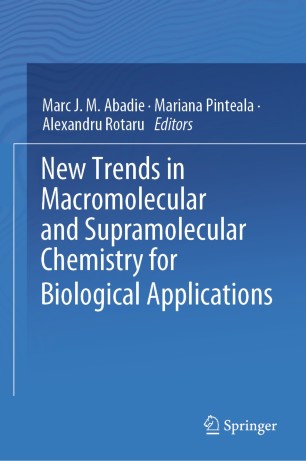 New Trends in Macromolecular and Supramolecular Chemistry for Biological Applivations
New Trends in Macromolecular and Supramolecular Chemistry for Biological Applivations
Edited by Marc J.M. Abadie, Mariane Pinteala, Alexandru Rotaru
Chapter 8
Development of Novel Versatile Theranostic Platforms Based on Titanate Nanotubes: Towards safe Nanocarriers for Biomedical Applications
(pages 151-178)
Julien Boudon, Fadoua Sallem, Alexis Loiseau, Lionel Maurizi, Anne-Laure Papa and Nadine Millot
2021 by Springer – 371 Pages
ISBN 978-3-030-57456-7
Most significant publications
-
-
Identification of the Proteins Determining the Blood Circulation Time of Nanoparticles, ACS Nano, 17, (13), 12458-12470, 2023 (DOI:10.1021/acsnano.3c02041)
-
Anti-Platelet effect Induced by Iron Oxide Nanoparticles: Correlation with Conformational Change in Fibrinogen, Small, 17, (1), 2004945, 2021 (DOI:10.1002/smll.202004945)
-
In vivo protein corona on nanoparticles: does the control of all material parameters orient the biological behavior?, Nanoscale Advances, 2021, 3, 1209-1229, 2021 (DOI: 10.1039/D0NA00863J)
- Beyond unpredictability: the importance of reproducibility in understanding the protein corona of nanoparticles, Bioconj. Chem., 29, (10), 3385-3393, 2018 (DOI:10.1021/acs.bioconjchem.8b00554)
- Significance of surface charge and shell material of Super-paramagnetic Iron Oxide Nanoparticles (SPIONs) based core/shell nanoparticles on the composition of the protein corona, Biomater. Sci., 3, (2), 265-278, 2015 (DOI:10.1039/C4BM00264D)
- Influence of surface charge and polymer coating on internalization and biodistribution of PEG-modified iron oxide nanoparticles, J. Biomed. Nanotech., 11, (1), 126-136, 2015 (DOI:10.1166/jbn.2015.1996)
- Ex situ evaluation of the composition of protein corona of intravenously injected superparamagnetic nanoparticles in rats, Nanoscale, 6, (19), 11439-11450, 2014 (DOI:10.1039/C4NR02793K)
- Protein Corona Composition of Superparamagnetic Iron Oxide Nanoparticles with Various Physico-Chemical Properties and Coatings, Scientific Reports, 4, 5020, 2014 (DOI:10.1038/srep05020)
-
Guest Editor of Special Issues
2020-2021 in Applied Sciences [IF=2.679] « Applications of nanoparticles in Pharmaceuticals«
2022-2023 in International Journal of Molecular Sciences [IF = 6.208] « Nanoparticle-Based for Diagnostics and Therapies: Interactions with Bio-Environment«
2021-2023 in Applied Sciences [IF=2.7] « Next Steps for the Production of Nanoparticles for Nanomedicine«
Communications
56 international and national conferences including:
7 invited talks with international collaborators
Supervisions
- 4 PhD students (2 in progress)
- 14 Master theses (1 in progress)
- ~20 students from Bachelor to Master 2 during semesters projects or short internships
Teaching
36 hours per year on supervised project: Fifth year of engineering school: ESIREM (École supérieure d’ingénieurs de recherche en matériaux et en infotronique)
5-10 hours per year of Analyses project from the Master CAC
4-8 hours per year of supervision of internship of Fourth year engineering students from ESIREM
Organizations of conferences and general public meetings
Since 2018: Principal investigator of the event « a Class / a Researcher » where pupils meet researchers during visits of researchers to their schools and visits of pupils in the laboratory.
June 2018: Organizer of the ANF NanoMed 2018 (Summer school on Nanomedicine in 2018)
- statut_ub:
- batiment:
- equipe_1:
- OCS
- fonction_equipe_1:
- Agent(e) de service
- mots_cles:
- adresse:
- onglets:
- {tab=Carrière} # {tab=Projets} # {tab=Publications} # {tab=Communications} # {tab=Enseignements} # {tab=Administration} # {/tabs}
- telephone:
- +333 80 39 61 71
- e-mail:
- lionel.maurizi@u-bourgogne.fr
- site_web:
- departement:
- a:1:{i:0;s:12:"Nanosciences";}
- fonction:
- CR CNRS
- localisation:
- C408A
- texte_onglets:
- carriere:
- projets:
- communications:
- publications:
- enseignements:
- administration:
- kc_data:
- a:8:{i:0;s:0:"";s:4:"mode";s:2:"kc";s:3:"css";s:115:"#publications ul { margin-left: 3em; margin-right: 3em; list-style-type: disc; }";s:9:"max_width";s:0:"";s:7:"classes";s:0:"";s:9:"thumbnail";s:0:"";s:9:"collapsed";s:0:"";s:9:"optimized";s:0:"";}
- switch:
- 0
- kc_raw_content:
- [kc_row use_container="yes" _id="933981"][kc_column width="12/12" video_mute="no" _id="909825"][kc_column_text _id="616100"]
Personal website
[/kc_column_text][kc_tabs speed="450" pagination="yes" active_section="1" _id="999888"][kc_tab title="Career" _id="960902"][kc_spacing height="20" _id="271320"][kc_column_text _id="297714"]Educations and experiences
[/kc_column_text][kc_spacing height="20" _id="875161"][kc_column_text _id="918420"]With a chemical engineering background I started in 2010 a PhD in physical-chemistry on the syntheses and characterizations of nanoparticles for biomedical applications. While going deeper into my nanoparticles skills I learned new knowledge on toxicities and biological behaviors of nanohybrids made for medical purposes.
During my postdoctoral experiences from 2011 to 2016, in particular at EPFL, I continued working on synthesis and characterizations methods "GMP-like" for nanomaterials in order to answer pharmaceutical and medical requirements. I also focused my research on the study and the understanding of the role of nanoobjects physico-chemistry on the living world especially their interactions with protein from biological media: the "Protein Corona"
This thematic is driving my actual research at ICB Laboratory (Nanosciences Department).
[/kc_column_text][kc_accordion _id="355868" close_all="yes"][kc_accordion_tab title="More details" _id="783101"][kc_column_text _id="47463"]2007-2010: After a chemical engineering diploma from the University of Technology of Compiegne (UTC), I started a PhD in physical chemistry at the ICB Laboratory on the Elaboration of functionalized nanoparticles: applications as MRI contrast agent. My research was focused on the syntheses of magnetic nanparticles via soft chemistry or hydrothermal and continuous methods with an accurate control of the physicochemical properties and in depth characterizations. Nanoparticles' surfaces were also modified and functionalized for a better biocompatibility, less toxicity and targeting behviors in order to be used as a Magnetic Resonance Imaging (MRI) contrast agent.
2011-2015: I worked for 4 years in Pr. H. Hofmann's team at the Ecole Polytechnique Fédérale de Lausanne (EPFL) on a FP7 European project (Nanodiara) on the development of novel nanotechnology based diagnostic and therapeutic systems for arthritic diseases. My research was centered on one part on the reproducibility and scale-up of the syntheses and methods to face biomedical challenges. On another part, I studied the interactions between nanoparticles and proteins in order to better understand their biological behaviors. This scientific area is commonly called: the "Protein Corona".
2015-2016: After these projects, I continued my research at Dublin City University (Pr. Dermot Brougham) on a FP7 European project (UNION). Then at Basel University (Pr. Cornelia Palivan) I worked on a Swiss project NCCR (National Centres of Competence in Research). These two projects were focused on the development of physicochemical solutions for biomedical applications such as "nano-flowers" or "nano-vesicles".
Since the end of 2016: I got a CNRS Researcher (CR) permanent position at the Nanosciences Department of the ICB laboratory to continue working on my thematic focused on the development of nanomedical solutions and on the understanding of their biological behaviors.
[/kc_column_text][/kc_accordion_tab][/kc_accordion][kc_spacing height="10px" _id="763050"][kc_column_text _id="194084"]Main fields of expertise
[/kc_column_text][kc_spacing height="20" _id="897273"][kc_column_text _id="411459"]- Control of physico-chemistry of nanomaterials
[/kc_column_text][/kc_accordion_tab][/kc_accordion][kc_column_text _id="358123"]
- "GMP-like" surface modification of nanomaterials for biomedical purposes
[/kc_column_text][kc_accordion _id="573152" close_all="yes"][kc_accordion_tab title="More details" _id="409216"][kc_column_text _id="425538"]
[/kc_column_text][/kc_accordion_tab][/kc_accordion][kc_column_text _id="483220"]
- Biological interactions of nanomaterials
[/kc_column_text][kc_accordion _id="784626" close_all="yes"][kc_accordion_tab title="More details" _id="798526"][kc_column_text _id="831787"]
[/kc_column_text][/kc_accordion_tab][/kc_accordion][/kc_tab][kc_tab title="Projects" _id="161940"][kc_column_text _id="374848"]
Main projects in progress
[/kc_column_text][kc_spacing height="20px" _id="274995"][kc_column_text _id="46197"]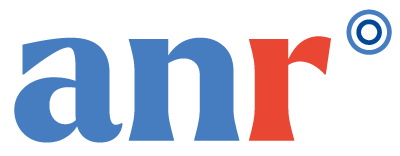 2022-2026: ANR JC/JC Nanoblorona
2022-2026: ANR JC/JC Nanoblorona
Nanoparticles in blood: understanding and controlling protein corona for optimized nanomedicineRole during the project: Project leader.
The main goal of this project is to understand, control and optimize protein corona on NPs to avoid suffering random protein adsorption affecting the biomedical efficiencies of engineered NPs circulating in blood.
This project proposes a comprehensive study focused on NPs/proteins interactions in blood circulation in order to control their biological response.
[/kc_column_text][kc_spacing height="10px" _id="915853"][kc_column_text _id="48264"] 2021-2024: ANR UFO
2021-2024: ANR UFO
Up-conversion ferroelectric nanocrystal for optical sensing for electric potential in biological systemsDeveloping an optical nanosensor of extracellular potential in biological environment that transduces cell-related electrical changes (e.g. EAP in the case of neurons) into photoluminescence (PL) modifications relying on a mechanism never explored.
[/kc_column_text][kc_spacing height="10px" _id="579957"][kc_column_text _id="252680"]
[/kc_column_text][kc_spacing height="10px" _id="887506"][kc_column_text _id="158812"]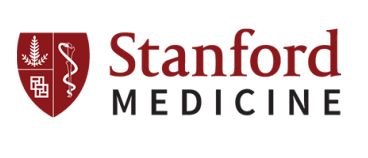 2020-2022: Collaborative Research Project France-Stanford
2020-2022: Collaborative Research Project France-Stanford
Monitoring therapeutic cell treatments using novel nanoprobes.
Role during the project: Project leader.
[/kc_column_text][kc_spacing height="10px" _id="798365"][kc_column_text _id="584451"]Main projects completed
[/kc_column_text][kc_spacing height="20px" _id="299028"][kc_column_text _id="786412"] 2019-2022: Regional project on the studies and understanding of proteins interactions with NPs' surfaces (Inititation of a new research team ANER: Nanoprot” n° 2019-Y-10648)
2019-2022: Regional project on the studies and understanding of proteins interactions with NPs' surfaces (Inititation of a new research team ANER: Nanoprot” n° 2019-Y-10648)Role during the project: Project leader.
[/kc_column_text][kc_spacing height="10px" _id="309757"][kc_column_text _id="773146"] 2019-2020: Equipex Imappi
2019-2020: Equipex Imappi
In vivo studies linking the interactions between proteins and nanoparticles and their biodistribution for an optimized development of nanomedicine (ANR-10-EQPX-05 IMAPPI 2020-IMAPPI-1)Role during the project: Project leader.
[/kc_column_text][kc_spacing height="10px" _id="296066"][kc_column_text _id="409630"]
[/kc_column_text][kc_accordion _id="27138" close_all="yes"][/kc_accordion][kc_column_text _id="811799"]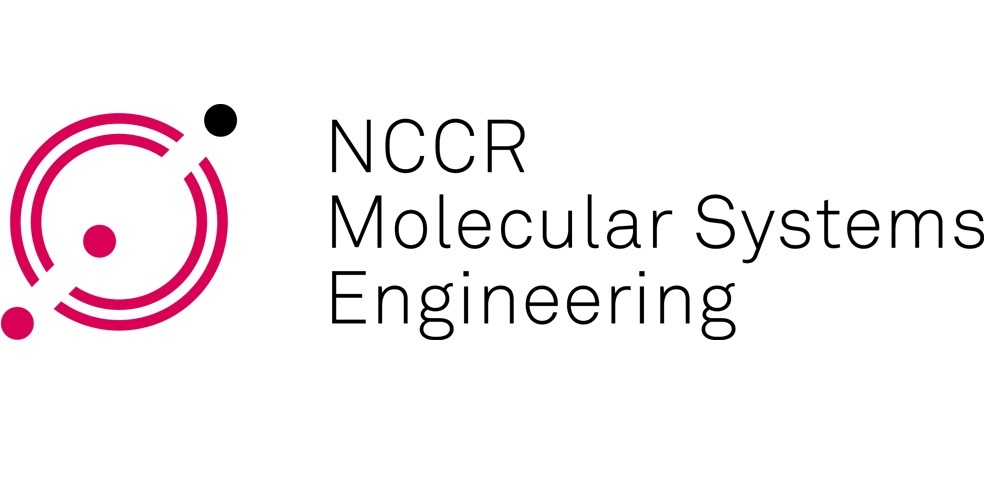 2016: Swiss project NCCR (National Centers of Competence in Research)
2016: Swiss project NCCR (National Centers of Competence in Research)
Molecular Systems Engineering on the development of innovative molecular systems approaching the complexity of a cell.
Role during the project: Member of the project
[/kc_column_text][kc_accordion _id="492126" close_all="yes"][/kc_accordion][/kc_tab][kc_tab title="Publications" _id="184624"][kc_column_text _id="818729"] 2011-2014: FP7 European project (Nanodiara)
2011-2014: FP7 European project (Nanodiara)
Development of nanotechnological tools for the detection and the therapy of arthrtic diseases.
Role during the project: Co-project leader of WP1Summary of publications
[/kc_column_text][kc_spacing height="20px" _id="866095"][kc_column_text _id="810365"]42 articles in peer-reviewed journals
4 international conferences proceedings
4 Book chapters
ORCID number: 0000-0002-6346-7623[/kc_column_text][kc_spacing height="20px" _id="473655"][kc_column_text _id="615224"]
[/kc_column_text][kc_carousel_images img_size="full" items_number="3" tablet="2" mobile="1" speed="500" pagination="yes" auto_play="yes" delay="8" alt_text="__empty__" _id="736170" images="20316,20317,21070" onclick="custom_link" custom_links="aHR0cDovL2R4LmRvaS5vcmcvMTAuMTAzOS9DNEJNMDAyNjREDQpodHRwOi8vZHguZG9pLm9yZy8xMC4xMDAyL3NtbGwuMjAyMDA0OTQ1DQpodHRwczovL2RvaS5vcmcvMTAuMTAzOS9EME5BMDA4NjNK" custom_links_target="_blank"][kc_column_text _id="921234"]
[/kc_column_text][kc_spacing height="20px" _id="853458"][kc_column_text _id="850728"]Publications list and Book Chapters details
[/kc_column_text][kc_accordion _id="219470" close_all="yes"][kc_accordion_tab title="Publications list" _id="309731"][kc_raw_code code="PGlmcmFtZSBzdHlsZT0id2lkdGg6MTAwJTtoZWlnaHQ6NzV2aDsiIHNyYz0iaHR0cHM6Ly9oYWx0b29scy5hcmNoaXZlcy1vdXZlcnRlcy5mci9QdWJsaWMvYWZmaWNoZVJlcXVldGVQdWJsaS5waHA/aWRIYWw9bGlvbmVsLW1hdXJpemkmQ0JfYXV0ZXVyPW91aSZDQl90aXRyZT1vdWkmQ0JfYXJ0aWNsZT1vdWkmbGFuZ3VlPUFuZ2xhaXMmdHJpX2V4cD1hbm5lZV9wdWJsaSZ0cmlfZXhwMj10eXBkb2MmdHJpX2V4cDM9ZGF0ZV9wdWJsaSZvcmRyZV9hZmY9VEEmRmVuPUFmZiZjc3M9Li4vY3NzL1Zpc3VSdWJyaXF1ZUVuY2FkcmUuY3NzIj48L2lmcmFtZT4NCg==" _id="78745"][/kc_accordion_tab][/kc_accordion][kc_accordion _id="591826" close_all="yes"][kc_accordion_tab title="4 Books chapters" _id="493519"][kc_column_text _id="575132"]
Nanoparticles in the Lung:
Environmental Exposure and Drug Delivery
Edited by Akira Tsuda and Peter GehrSection VI:Special Issues
Chapter 16: Physicochemical, Colloidal, and Transport Properties
(pages 251-266)Heinrich Hofmann, Lionel Maurizi, Marie-Gabrielle Beuzelin, Usawadee Sakulkhu and Vianney Bernau
December 19, 2014 by CRC Press - 403 Pages
ISBN 9781439892794 - CAT# K14165[/kc_column_text][kc_column_text _id="923392"]
 Unraveling the Safety Profile of Nanoscale Particles and Materials
Unraveling the Safety Profile of Nanoscale Particles and Materials
From Biomedical to Environmental Applications
Edited by Andreia C. Gomes and Marisa P. SarriaChapter 2
Toxicological Risk Assessment of Emerging Nanomaterials: Cytotoxicity, Cellular Uptake, Effects on Biogenesis and Cell Organelle Activity, Acute Toxicity and Biodistribution of Oxide Nanoparticles
(pages 17-36)Lionel Maurizi, Anne-Laure Papa, Julien Boudon, Sruthi Sudhakaran, Benoit Pruvost, David Vandroux, Johanna Chluba, Gerard Lizard and Nadine Millot
March, 2018 by InTech - 172 Pages
[/kc_column_text][kc_column_text _id="462878"]
ISBN 9789535139409 Computational Techniques for Analytical Chemistry and Bioanalysis
Computational Techniques for Analytical Chemistry and Bioanalysis
Edited by Philippe B. Wilson and Martin GrootveldChapter 8
Solid State Chemistry: Computational Chemical Analysis for Materials Science
(pages 287-334)Estelina Lora da Silva, Sandra Galmarini, Lionel Maurizi, Mario Jorge Cesar dos Santos, Tao Yang, David J. Cooke and Marco Molinari
2021 by RSC - 365 Pages
ISBN 978-1-78801-461-8[/kc_column_text][kc_column_text _id="40377"]
 New Trends in Macromolecular and Supramolecular Chemistry for Biological Applivations
New Trends in Macromolecular and Supramolecular Chemistry for Biological Applivations
Edited by Marc J.M. Abadie, Mariane Pinteala, Alexandru RotaruChapter 8
Development of Novel Versatile Theranostic Platforms Based on Titanate Nanotubes: Towards safe Nanocarriers for Biomedical Applications
(pages 151-178)Julien Boudon, Fadoua Sallem, Alexis Loiseau, Lionel Maurizi, Anne-Laure Papa and Nadine Millot
2021 by Springer - 371 Pages
ISBN 978-3-030-57456-7[/kc_column_text][/kc_accordion_tab][/kc_accordion][kc_spacing height="20px" _id="306078"][kc_column_text _id="214373"]
Most significant publications
[/kc_column_text][kc_spacing height="20px" _id="228720"][kc_column_text _id="359085"]-
-
Identification of the Proteins Determining the Blood Circulation Time of Nanoparticles, ACS Nano, 17, (13), 12458-12470, 2023 (DOI:10.1021/acsnano.3c02041)
-
Anti-Platelet effect Induced by Iron Oxide Nanoparticles: Correlation with Conformational Change in Fibrinogen, Small, 17, (1), 2004945, 2021 (DOI:10.1002/smll.202004945)
-
In vivo protein corona on nanoparticles: does the control of all material parameters orient the biological behavior?, Nanoscale Advances, 2021, 3, 1209-1229, 2021 (DOI: 10.1039/D0NA00863J)
- Beyond unpredictability: the importance of reproducibility in understanding the protein corona of nanoparticles, Bioconj. Chem., 29, (10), 3385-3393, 2018 (DOI:10.1021/acs.bioconjchem.8b00554)
- Significance of surface charge and shell material of Super-paramagnetic Iron Oxide Nanoparticles (SPIONs) based core/shell nanoparticles on the composition of the protein corona, Biomater. Sci., 3, (2), 265-278, 2015 (DOI:10.1039/C4BM00264D)
- Influence of surface charge and polymer coating on internalization and biodistribution of PEG-modified iron oxide nanoparticles, J. Biomed. Nanotech., 11, (1), 126-136, 2015 (DOI:10.1166/jbn.2015.1996)
- Ex situ evaluation of the composition of protein corona of intravenously injected superparamagnetic nanoparticles in rats, Nanoscale, 6, (19), 11439-11450, 2014 (DOI:10.1039/C4NR02793K)
- Protein Corona Composition of Superparamagnetic Iron Oxide Nanoparticles with Various Physico-Chemical Properties and Coatings, Scientific Reports, 4, 5020, 2014 (DOI:10.1038/srep05020)
-
[/kc_column_text][kc_column_text _id="385077"]Guest Editor of Special Issues
2020-2021 in Applied Sciences [IF=2.679] "Applications of nanoparticles in Pharmaceuticals"
2022-2023 in International Journal of Molecular Sciences [IF = 6.208] "Nanoparticle-Based for Diagnostics and Therapies: Interactions with Bio-Environment"
2021-2023 in Applied Sciences [IF=2.7] "Next Steps for the Production of Nanoparticles for Nanomedicine"
[/kc_column_text][kc_column_text _id="44284"]
[/kc_column_text][/kc_tab][kc_tab title="Communications / Teachings" _id="573051"][kc_column_text _id="26093"]Communications
[/kc_column_text][kc_spacing height="20px" _id="982742"][kc_column_text _id="122860"]
56 international and national conferences including:
7 invited talks with international collaborators
[/kc_column_text][kc_spacing height="20px" _id="264756"][kc_column_text _id="897920"]Supervisions
[/kc_column_text][kc_spacing height="20px" _id="283325"][kc_column_text _id="918846"]
- 4 PhD students (2 in progress)
- 14 Master theses (1 in progress)
- ~20 students from Bachelor to Master 2 during semesters projects or short internships
Teaching
[/kc_column_text][kc_spacing height="20px" _id="835103"][kc_column_text _id="781756"]36 hours per year on supervised project: Fifth year of engineering school: ESIREM (École supérieure d'ingénieurs de recherche en matériaux et en infotronique)
[/kc_column_text][kc_spacing height="20px" _id="150417"][kc_column_text _id="104452"]
5-10 hours per year of Analyses project from the Master CAC
4-8 hours per year of supervision of internship of Fourth year engineering students from ESIREMOrganizations of conferences and general public meetings
[/kc_column_text][kc_spacing height="20px" _id="767738"][kc_column_text _id="159389"]Since 2018: Principal investigator of the event "a Class / a Researcher" where pupils meet researchers during visits of researchers to their schools and visits of pupils in the laboratory.
June 2018: Organizer of the ANF NanoMed 2018 (Summer school on Nanomedicine in 2018)
[/kc_column_text][/kc_tab][/kc_tabs][/kc_column][/kc_row]

